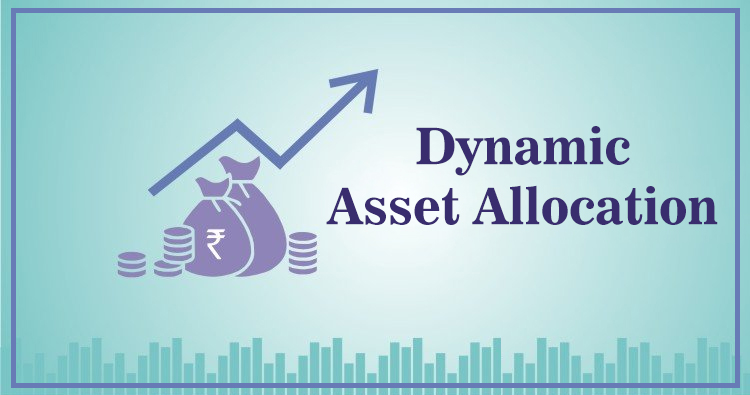

AMFI-Registered Mutual Fund Distributor



Everything you need to Know about Dynamic Asset Allocation Funds
In the past few months,market performance has been volatile. Proper asset allocation is one of the best ways to navigate market uncertainty. Asset allocation is the process where investors invest indifferent assets like equity and debt as per their risk taking capacity and goals.
Equity and debt allocation in a portfolio serve two different purposes. Equity investments have the potential to generate reasonable returns that help in wealth building. Debt investments aim to protect the capital.
However, for an individual investor like you or me, changing our asset allocation as per the market conditions may be confusing. Dynamic Asset Allocation funds or Balanced Advantage Fund can help us do that and reduce the risks associated with our portfolio.
What is Dynamic Asset Allocation Fund?
Dynamic Asset Allocation Fund or Balanced Advantage Fund is a type of hybrid mutual fund where fund managers invest in equity and debt assets and manage it dynamically as per the market conditions. Fund managers increase or decrease their allocation to equities/debt based on their market view.
How does Dynamic Asset Allocation fund works?
Past data have shown that different asset classes have low correlation to each other. So, debt and equity will outperform each other under different market conditions. These funds aim to harness the higher performance of equity and debt at different periods of time.
The fund managers will decide the mix of equity-debt based on various factors. These factors may differ among fund houses. Interest rate cycle, equity valuations, medium to long-term outlook of the asset class are some of the few aspects that fund managers can consider.
So when the valuations of equity markets are low, fund managers may increase their equity allocation in the portfolio and vice versa.
Asset Allocation of Dynamic Asset Allocation
The market regulator SEBI has kept no investment range for investment in equity and debt assets. So, fund managers can take investment calls based on their research and outlook. However, all funds will have a prescribed asset allocation. The investment range of different funds will lie within those limits.
E.g., the prescribed asset allocation of DSP Dynamic Asset Allocation Fund is as below:
On the other hand, here is the prescribed asset allocation of SBI Dynamic Asset Allocation Fund:
|
Instruments |
Minimum |
Maximum |
|
Equity & Equity related instruments including foreign securities and derivatives |
0 |
100% |
|
Debt instruments (including Central and State Government securities, debt derivatives) & Money Market Instruments (including TRIPARTY REPO, Reverse Repo and equivalent) |
0% |
100% |
So, the asset allocation pattern of different funds will vary. Hence, it is important for investors to check the asset allocation pattern before investing.
Who can invest in dynamic asset allocation funds?
These funds can be a good investment option for newbie risk-averse investors who want long-term capital appreciation from equity with less volatility.
Also, investors who are looking to invest in equity and debt as per the market conditions can also invest in these funds.
Things to keep in mind before investing
Conclusion:
Dynamic Asset Allocation Funds are hybrid funds. Fund managers take investment decisions based on market situations, outlook, etc. As these funds invest in equity and debt, it has the potential to provide long-term capital appreciation with reasonable risk.Please consult us to know more.
This blog is purely for educational purpose and not to be treated as an personal advice. Mutual fund investments are subject to market risks, Read all scheme related documents carefully.
Office No 1207, 12th Floor, Wing A, R K ICONIC, Near Shital Park BRTS stand, 150 Feet Ringroad, Rajkot 360006
+91 9898312354
Risk Factors & Disclosures
Investments in Mutual Funds and other financial instruments are subject to market risks. Please read all scheme-related documents carefully before investing. Mutual Fund schemes do not guarantee or assure any returns, and past performance may not be indicative of future results. There is no assurance that the investment objective of any suggested scheme will be achieved.
Investors are advised to evaluate exit loads, Total Expense Ratio (TER), and other applicable costs before making any investment decisions. We deal exclusively in Regular Plans of Mutual Fund schemes and earn a Trailing Commission on client investments. Commission earnings are disclosed to clients at the time of investment. Investors also have the option to invest in Direct Plans, which offer a lower expense ratio, but we do not earn commissions on Direct Plans and hence do not offer them.
AMFI Registered Mutual Fund Distributor – ARN-285987 | Date of Initial registration – 25 Jan 2024 | Current validity of ARN – 24 Jan 2027
Grievance Officer—Mr. Chintan Kamdar | Chintan@digi-finmart.com
Copyright 2024. DIGI-FINMART PVT. LTD. Important Links | Disclaimer | Disclosure | Privacy Policy | SID/SAI/KIM | Code of Conduct | SEBI Circulars | AMFI Risk Factors